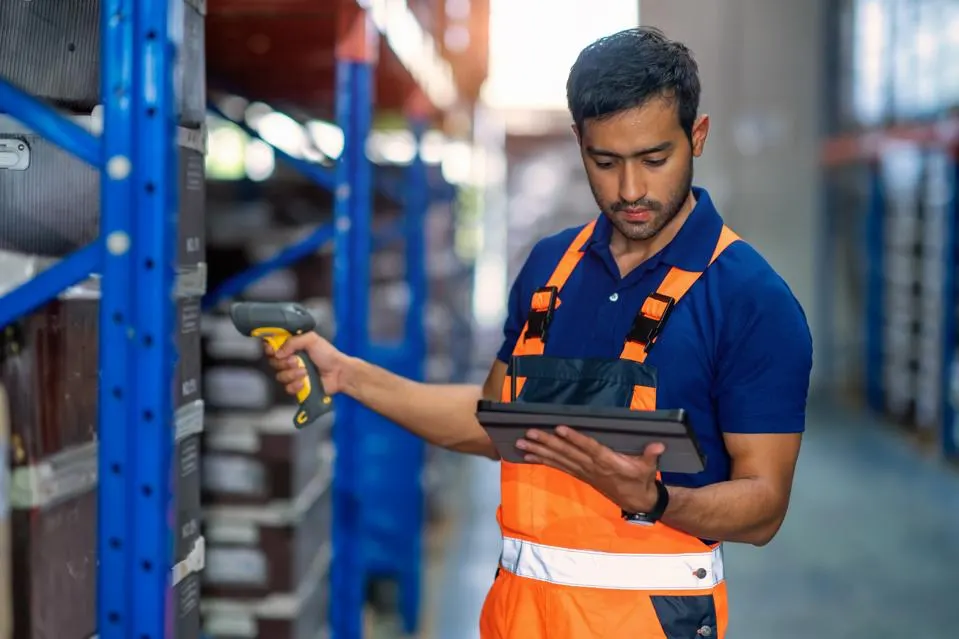As robotic automation solutions become complex, tools are essential to plan and validate the proposed solution in terms of usability, effectiveness and return on investment. While a mixture of 3-D models, simulations and spreadsheets is sufficient for basic analysis, digital twins are superior when it comes to capturing complex systems like warehouse operations, allowing for refined system analysis, optimization and testing. This provides better information for decision makers to be confident before deployment and go-live.
Order fulfillment in warehouses presents a pertinent use case to be modeled using digital twins, with multiple interdependencies in material and information flow as well as time criticality in operation. Simulation engines integrated with digital twins also help model and test algorithms for optimizing order fulfillment. Warehouse operations see fluctuations in load patterns and peak loads, which can be modeled and analyzed as different what-if scenarios on the twin, reducing surprises and increasing preparedness when the actual automation is implemented.
While digital twins have been used for some time in the manufacturing context, they have only recently been used as tools in modeling warehouse scenarios.
Planning A Digital Twin For Warehouse Operation
As with building models in any development environment, there is no one-size-fits-all approach in the realm of digital twins for warehouses. Setting up a digital twin for system modeling requires careful evaluation of the merits and demerits of multiple tools and platforms to model the twin, design of the model and its interfaces and choosing an approach that can do the following.
- Leverage platform libraries to model the behavior of key elements of the proposed automation at the warehouse.
- Interface with actual hardware elements and software systems.
- Have sufficient physics modeling capabilities to integrate simulations as needed.
- Provide means to integrate and test different algorithmic approaches.
- Deliver to a testing strategy across functional and accelerated lifecycle testing.
- Have data logging and representation capabilities to visualize and analyze test results.
Platform Libraries To Model Behavior
The performance of a digital twin depends on the specific libraries used to model subsystems and their operation. Therefore, platform selection for the twin needs identification of key elements of hardware to be modeled, including key makes, availability of libraries to represent the selected hardware, controls modules and virtual commissioning capabilities.
Interface With Actual Hardware Elements And Software Systems
In a warehouse environment, there are multiple systems that work in tandem: WMS, OMS (including order orchestration), automated material handling systems like shuttle systems, AGV/ AMR, conveyors.
The digital twin developed needs to model behavior and provide a seamless integration across these systems, both in the physical and digital domains. Common interfaces include:
- MQTT – Interface with IOT devices/gateways directly.
- Ethernet IP – Interface with control elements like PLC and some hardware systems.
- ROS – Interface with robots.
- Rest API – Interface with application software.
Simulation Capabilities
When designing the digital twin for the warehouse, you can choose to model subsystems or portions of the subsystem as a physics-based twin or a hardware twin. While physics-based twins simulate system behavior using physics principles, hardware twins use virtual replicas of specific hardware components. The choice between the two is often dictated by the level of detail required, available resources and specific details of the warehouse operations to be captured from the twin. Some platforms may excel in delivering high-fidelity simulations, while others may be better at integrating with specific hardware or software ecosystems. The design intent of the digital twin needs to drive the choice of the appropriate platform for the twin.
Different Algorithmic Approaches
Order fulfillment needs optimization across various orchestrations, including but not limited to:
- Fulfillment orchestration – Wave vs. waveless, parameters for wave generation, batching, staging.
- Storage/retrieval – Selection of SKUs and distribution across warehouses or the placement of SKUs within a warehouse for fast order fulfillment. This becomes even more important in the context of micro warehouses where space is limited, and demand is dynamic.
- Replenishment algorithms – For when and how the SKU gets replenished in the warehouse.
The digital twin should have capabilities to model different choices across these orchestrations in isolation and in tandem and study the effect on order fulfillment in the warehouse. Also, the twin needs to be able to integrate the learning component in these algorithms and the improvements in algorithmic performance over time.
Testing Strategy
The testing strategy using the digital twin needs to be carefully thought out so that it can be used as a valuable tool for system testing and validation, providing a more holistic view of how the warehouse would perform in real-world conditions.
Hardware twins mimic the time constants of physical systems, capturing their behavior in a realistic manner, but they do not lend themselves freely to accelerated testing. Physics-based twins lend themselves easily to acceleration testing and concurrent testing but may sub-optimally represent the true system behavior based on the correctness of assumptions. The assumptions need to be validated to ensure their accuracy. This validation process is often carried out in isolation, treating each assumption as an individual entity, ensuring that any inaccuracies are identified and corrected promptly without causing cascading errors in the system.
The above considerations have to be carefully factored in while selecting the approach to model different subsystems and modules, hardware or physics-based twins in the digital twin.
Recording Data And Logging
Data recording and logging are crucial components of any digital twin project. This data not only serves as the basis for simulation and testing but also facilitates debugging, system optimization and performance analysis. Effective data recording strategies can also assist in the validation of model assumptions, further enhancing system accuracy and reliability.
Conclusion
Digital twins are not merely simulation tools; they represent a fundamental shift in the way we can plan, design, deploy and optimize robotic automation systems in warehouses. A well-designed digital twin, factoring in the aspects outlined in this article, empowers reliable, predictable and efficient order fulfillment, catalyzing innovation and progress in customer satisfaction.






